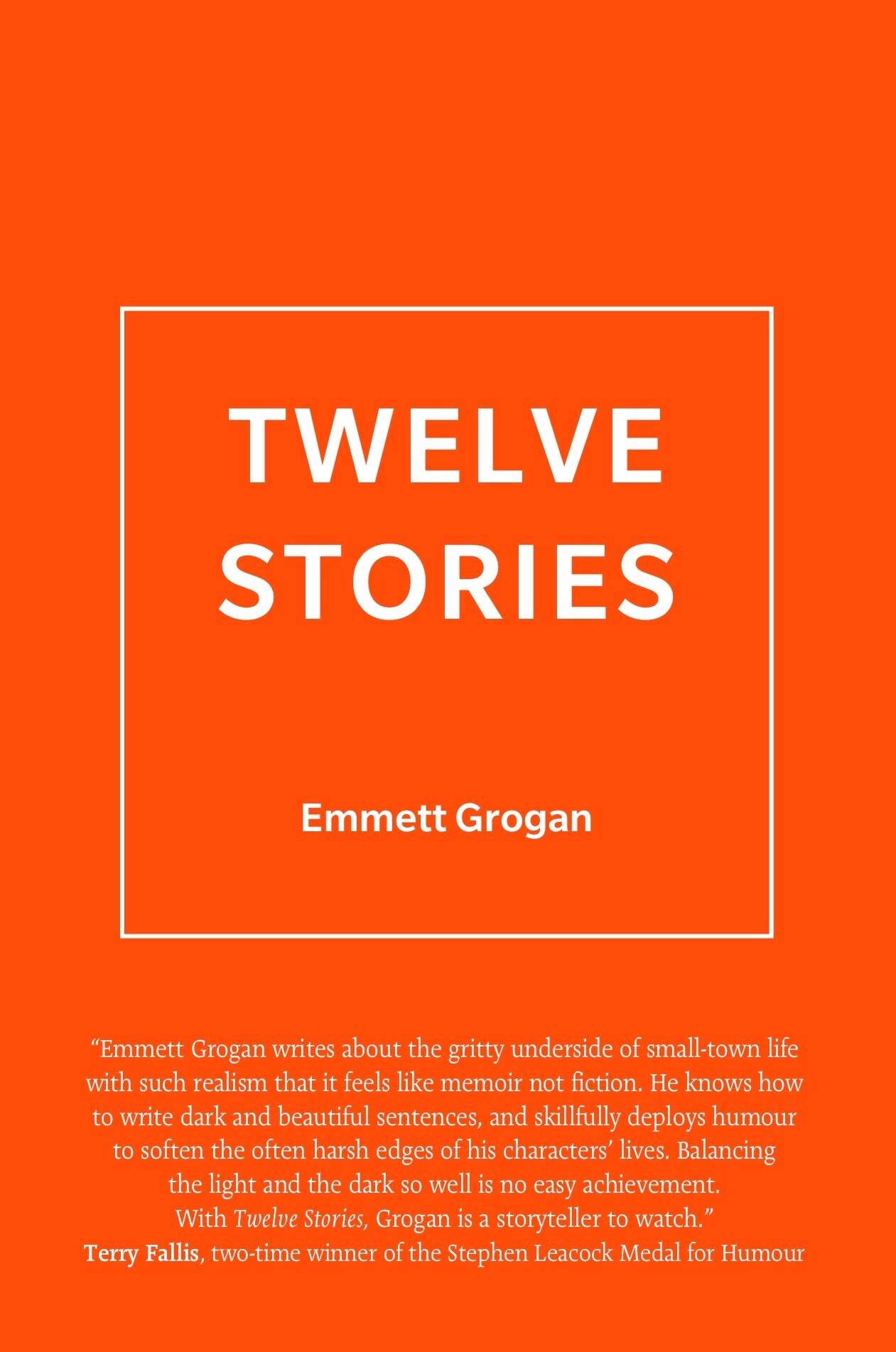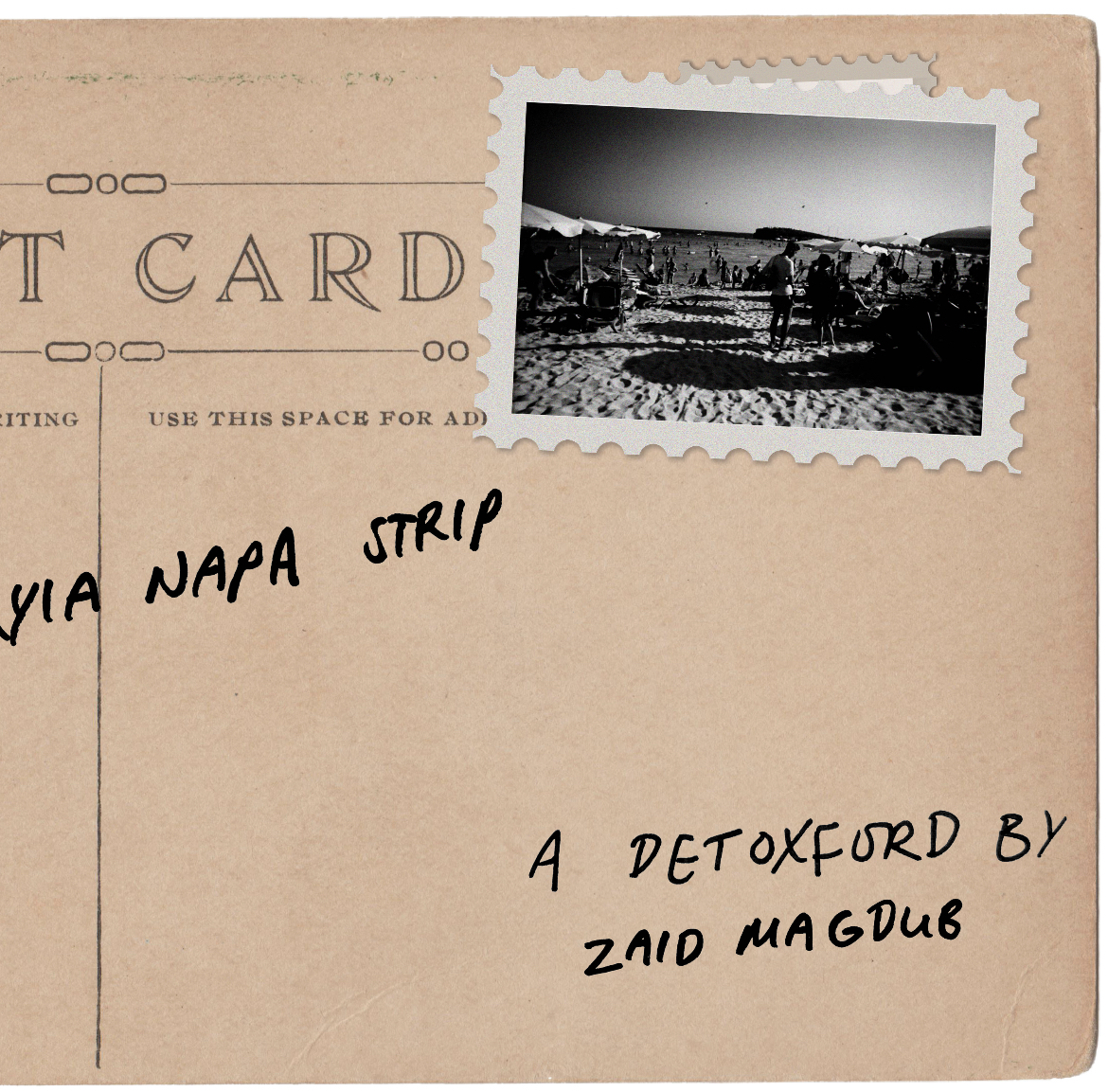
A book or a prank? My interview with a budding Canadian novelist
There was nothing particularly unusual about Terry, the cashier at my local independent bookstore. He was a lofty middle-aged man with a thick Canadian accent, and he often gave me recommendations whenever I stopped by with my friend. Last Summer, however, he suggested something a little different. He held up a blank orange book with the words “Twelve Stories by Emmett Grogan” written on the front in a bold unglamorous font. “You know,” he said. “If you like Vonnegut and Faulkner and whatnot, you should give this guy a go. He’s funny, he’s literary and he’s Canadian.” Looking for something to read, I bought it. My friend bought a copy as well – but with a yellow cover instead of orange.
I breezed through the novel – and enjoyed it. It was about a con-artist, recounting his life story from his childhood in Northwestern Ontario to selling art forgeries to gullible WASPs in Toronto. It was a tragicomic coming-of-age story that captured a specific time, place, and culture in Canada. But while reading it, I noticed a couple of oddities. Firstly, there were fifteen chapters – despite it being called “twelve stories”. And secondly, when I talked about the book with my friend, I found out that the line-up of stories in his copy was slightly different than mine.
I was curious about the author’s identity. At the back of the book, there was a photograph of a scowling man who looked around 80 years old. But the book was filled with nostalgic references to Star Wars and Dungeons & Dragons, implying that the narrator only reached adulthood in the 90s. Furthermore, the “About the Author” section said that he studied “fine arts” at the University of Tuktoyaktuk. If you aren’t Canadian, Tuktoyaktuk is a tiny Inuit village north of the Arctic Circle with a Winter temperature of -50°C. Going to university there would be as farfetched as going to university at the North Pole. I was beginning to grow suspicious and intrigued. Who the heck is this guy?
I tried searching his name, “Emmett Grogan”, on google to track him down, and all I found was some whacky American counter-culture figure who died in the 70s. How would he know about growing up in Northwestern Ontario? I had just about reached the peak of my confusion when one quote about this guy caught my eye: “He’s America’s most famous invisible man, determined to keep his identity a secret and spread deceptions to the press. He lets others use his name to the point where some people don’t even think he exists”. As far as I was concerned, the true author of this book didn’t exist.
By this point, I was beginning to feel as though I was the victim of some elaborate prank. As I continued to scroll through google, I stumbled upon a familiar face… Terry the bookseller! That trickster conned me into buying his book! Upon further scrolling, I discovered that he had sold around 2,000 copies. He also was nominated for the Stephen Leacock Medal of Humour and won the Northern Ontario Literary Award – two great honours for Canadian writers. Impressed by the book, the prank behind it, and his success, I emailed the store to get in touch with him.
I sat down with Terry at the nearby Tim Hortons for a coffee. He immediately began to unload a large backpack he brought with him – like a child opening birthday presents. First, he pulled out an eight-book box set of Twelve Stories, each copy a different colour. It started out as an accident, he told me, when the printer used a slightly different shade of blue for the second batch of copies. This gave him the idea to make each new printing a different colour, and to rearrange the line-up of stories with every new edition. “I like the idea that a river is different every time you step into it,” Terry said. For example, in a story called “A Two Car Funeral”, the narrator casually mentions, “we got stranded on a bus, but that’s a story for another day”. In the next printing, Terry swapped out the story for “The Lost Weekend” – which is that story. “Why wouldn’t I want to do that? It’s fun!” Terry exclaimed. “It’s a prank, it’s a gag, it’s performance art.”
I then asked him the question I was burning to ask: why use the name Emmett Grogan? Plenty of authors use pseudonyms, but why use the pseudonym of a real guy who died in the 70s? It was at this point that he reached back into his backpack and pulled out a large hardcover – Ringolevio by Emmett Grogan. “This book profoundly changed my life when I found it in a thrift store twenty years ago.”
According to Terry, Emmett Grogan was the Forrest Gump of the San Francisco underground in the late 60s, popping up at pivotal moments in the counterculture. He was part of a group called the Diggers, who did performance art in the street, and ran this network of places called the “free store”, where there’s food, clothing, and household goods. Anything you wanted you could take for free. “The unspoken part was that most of what was there was stolen,” Terry told me. “And ‘Emmett Grogan’ was actually his pseudonym too. The guy’s real name was Eugene Grogan. And he used to tell his crew, ‘When you’re out there doing your thing, if you get picked up by the cops, just use my name’. So, if you’re ‘Emmett Grogan’, and I’m ‘Emmett Grogan’, and he’s ‘Emmett Grogan’… we’re all ‘Emmett Grogan’. We’re Spartacus! I use the name Emmett Grogan because his books showed me how to live creatively, live life as an artist, buck convention, break the rules, and go out there and do it your own way.”
The book’s narrator, also named Emmett Grogan, is just as duplicitous as the author. “He’s a bit of an unreliable narrator, because he and his friends started drinking when they were twelve years old,” Terry explained. “He figures out all the stuff he doesn’t understand about his own life a little bit too late. He’s a scoundrel in the business world too. In fact, he’s so unreliable that it’s a novel told in fifteen chapters, but it’s called Twelve Stories. And again, the real Emmett Grogan was a con-artist. So, this is a novel about a con-artist, by a con-artist, using the name of a con-artist – it’s all holistic!”
Despite these deceptions, Terry claims the book is authentic. Like his narrator, Terry grew up in Nipigon. In contrast to the rest of Canada, whose population tightly clings to the U.S.–border, Nipigon lies way up in the sparsely populated, heavily forested, Northwestern Ontario. When he set out to write Twelve Stories, he was determined to capture his experiences there on paper. “The Canadian literature I respect the most is identifiably in the time and place of Canada, whether it’s the Prairies of Margaret Laurence, the Toronto of Margaret Atwood, or the Montreal of Mordecai Richler. Those are the people I try to emulate. I’m the only guy who can write a novel about growing up in Northern Ontario, so it’s kind of on me to write it.” I asked whether he’d consider the book a memoir. “All first fiction is autobiographical, He answered. “And when you read this novel, there are parts that are 100% true and parts that are 100% made up. If I’ve done my job – you won’t know which is which.”
When he was in university, Terry did a lot of work for the student newspaper, so he always knew he wanted to write a novel. But he didn’t get around to it until after 2012, when he noticed a post-it note he had put on the wall saying, “Finish Twelve Stories in 2012”. He finally buckled down in 2015, writing most of the novel in 2016 and 2017. “You go into some type of state,” he describes. “Where you write something, and later, you look at it, and go, ‘Jesus, that is really personal’. Sometimes when the pages are done, I don’t even know how I wrote it.” In 2018, he put it together, published it, and released it into the world. It was the 20th anniversary of his job at BMV Books, and the 40th anniversary of Emmett Grogan’s death.
Terry chose to self-publish. “It takes ten years to get your first novel published, and I always knew that what I write about is not what commercial publishers are looking for. There’s an audience for it – I know there is – but I’m not what they’re looking for. Who wants to publish a novel by some guy who’s fifty years old?” He also feared that a traditional publisher would force him to make creative compromises. “They would have been like, no you have to use your real name, no you have to use your real photograph, no you can’t change the colour between printings.”
He recounted a particularly demoralising story from his friend. “They changed the title of the book, and cut about 25% of his material,” he said. “The book got a single season on the shelf, and it’s essentially out of print now. Publishing seems rigged. It’s about getting the grants to fund the publishing program, rather than build an audience for the author. So, I kept control, and I have had much more success and fun with the project.” Terry’s job as a bookseller gave him the perfect opportunity to peddle the book himself, without the help of any major publishers. “I knew that one thing I had is the ability to hand-sell the book to people who would be receptive to it,” he said. “And I wouldn’t have to make any creative compromises. By the time my friend’s book was released in 2020, I had already pulled the trigger on my fourth printing. Now, I’ve sold about 1900 copies. The new printing, purple cover, pushes it up to 2200.”
Before parting ways, I asked him about advice he’d give to aspiring writers. “Write it down the same way you’d speak it to your friends,” he told me. “Or the way you’d speak if you were standing in front of a jury.” He also urges people to write about their hometown – rather than London, Paris, New York, or Chicago. “When you read a book and it’s just generic, set in the most obvious place, and there’s nothing about it that’s authentic to the person – that’s the kind of stuff I stay away from, because you’re not getting anything out of it. I know that it could be tougher to sell this book internationally. But I made it so that there’s some universal experiences there, like dealing with your high school bully, or death in a small town. If someone wrote a novel and set it in southern Kentucky, and it was very specific to southern Kentucky, I’d be interested in reading that, because I could walk a mile in their footsteps.”
According to Terry, this is precisely what is lacking on the Canadian literary scene. “It drives me nuts when it’s a thriller set in Chicago by a Canadian author. That’s not literature. It’s not even Canadian. It seems like there’s no confidence by Canadian publishers in the Canadian audience wanting to read about a Canadian experience. But I think there is an audience for stories set in Canada.” The success of Twelve Stories proves this. “I’ve met people who bought it and haven’t started reading it yet. But I haven’t met anybody who read it and didn’t enjoy it.” It’s resonated in particular with fellow North Ontarians. “I’ve had people buy the book, read it, come back and buy another one, because their brother’s going to Lakehead University in Thunder Bay, and they want to send it up to him. And then it gets back to me that the brother’s read it, and he recognizes the places of Thunder Bay in the pages of the book! There’s a number of things in here that are almost like a secret code, with the places and the people, the way they talk, and the things that happen. It’s authentic, and that’s what I’ve tried to do.”
Twelve Stories is posted in segments on his website, emmettgrogan.com
Words by Samuel Moore.







